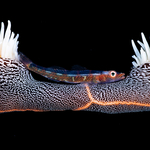
Tune in Sunday, November 29, 2020, at 7:30 pm EST as Anderson Cooper reports on the Shipwreck Clotilda and its legacy for the next edition of 60 Minutes.
In the autumn of 1859 and the summer of 1860, with 110-160 slaves, the schooner Clotilda was the last known U.S. slave ship to carry captives from Africa to the United States, landing at Mobile Bay, Alabama. The Clotilda was an 86 foot (26 m) long two-masted schooner with a beam of 23 ft (7.0 m).
Through the act, “Banning the Importation of Slaves” passed on March 2, 1807, Congress prohibited U.S. participation in the Atlantic slave trade, but the practice persisted illegally, especially through slave traders based in New York in the 1850s and early 1860s. In the case of the Clotilda, the sponsors of the voyage were based in the South and arranged in modern-day Ghana to buy slaves.

On July 9, 1860, Captain William Foster anchored Clotilda off Point of Pines in Grand Bay, Mississippi, near the border of Alabama, with 115 slaves for which he paid $100.00 each. He travelled overland to Mobile by horse and buggy to meet Timothy Meaher, a wealthy Mobile shipyard owner and steamboat captain, who founded Clotilda in 1855.
Fearful of criminal charges, Captain Foster brought the schooner into the Port of Mobile at night and had it towed up the Spanish River to the Alabama River at Twelve Mile Island.
He moved the slaves to a steamboat on the river, then burned Clotilda before sinking it to the water’s edge. He paid off the crew and ordered them to return North. The African slaves were mainly allocated to the Clotilda venture’s financial supporters.
In 1861, Meaher and Foster were tried in Mobile, Alabama by the federal government for unlawful importation of slavery, but the prosecution was dismissed for lack of evidence from the ship or its manifesto, and possibly due to the outbreak of the Civil War.
Since Captain Foster claimed that Clotilda had burned and sunk in the delta north of Mobile Bay, archaeological searches for the wreck continued into the 21st century. Locals also referred to several visible wrecks as the slave ship. Wreckage from Clotilda was allegedly discovered in 2018, but due to major differences between the two vessels, and obvious lack of any fire damage, the Alabama Historical Commission ruled out the findings.
In May 2019, the Alabama Historical Commission reported that researcher Ben Raines had finally found the wreck, showing “physical and forensic evidence that powerfully suggests that this is the Clotilda.”
Tune in Sunday to 60 minutes at 7:30 pm to Anderson Cooper’s report on the shipwreck Clotilda and its legacy.
Read More Scuba Features, 60 Minutes, African Slaves, Alabama Historical Commission, Anderson Cooper, Civil War USA, Mobile Alabama, Shipwreck Clotilda, Slave Ships, Slaves 60 Minutes Presents, “Making History by Revealing It” – The Shipwreck Clotilda


